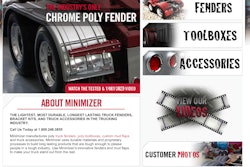This is the second article in a multi-part series on servicing the medium-duty marketplace. To read Part I, please CLICK HERE.
Medium-duty customers can provide opportunities for aftermarket businesses, but entering the market doesn’t come without struggles.
One area where independent aftermarket facilities are at a disadvantage is accessing parts and diagnostic information for medium-duty trucks and components. Like the heavy-duty market, most OEM-based diagnostic software is only available to dealers.
Messina says his technicians are trained with all the OEM technical information he can find. In most cases his technicians have the resources available to diagnose breakdowns. When they don’t, he says they shouldn’t hesitate to go to a dealer. If that’s what it takes to service a customer, that’s what they need to do.
The specificity of medium-duty components can be an issue as well. Parrott says his company talks with its customers about the parts they need or want. This allows the business to consistently update and improve its product offering to meet customer needs.
But that doesn’t fix every problem. Parrott says independent distributors are still at a disadvantage when it comes to identifying parts without the VIN-based parts lookup systems dealer networks use.
“It is easier for the dealer to look up the part because they can use the VIN,” he says. “We can’t do that. We rely on the customer to bring the part to us, or provide us the part number.”
From there, Parrott says his employees can cross check the part through catalogs and their parts inventory to find what the customer needs. It’s a longer process than a dealer, but it still works.
The best way to minimize these issues is to be active in industry organizations and take advantage of any OEM information you can find.
“It’s not like we’re powerless,” Parrott says. “There are things we can do.”











